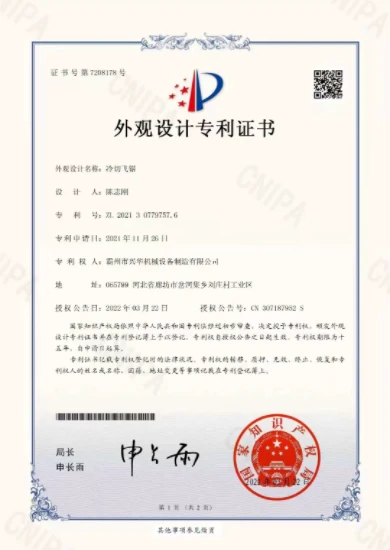erw welding machine
Understanding ERW Welding Machines Revolutionizing Metal Fabrication
Electric Resistance Welding (ERW) machines have transformed the landscape of metal fabrication by providing efficient and effective methods for joining metal components. This technology is especially prominent in the manufacturing of pipes and tubes, making it a critical piece of equipment in various industries ranging from construction to automotive. In this article, we will explore the fundamentals of ERW welding machines, their operational principles, benefits, applications, and advancements in technology.
What is ERW Welding?
Electric Resistance Welding is a welding technique that utilizes electrical resistance to generate heat. This heat forms when a current passes through the metal workpieces that need to be joined. The process is relatively straightforward the ends of the metal pieces are brought into contact, and a high electric current flows through them. The resistance at the joint interface produces heat, which eventually leads to the melting and fusion of the materials—resulting in a solid weld upon cooling.
The Working Principle of ERW Machines
ERW machines operate primarily on a continuous basis, making them highly efficient for mass production. The process begins with the feeding of metal strips into the machine. As the strip moves forward, it passes through several rollers that shape it into a tubular form. Once the strip reaches the desired shape, it enters the welding zone.
In this zone, the edges of the metal tube are brought together with precision. Electrode tips apply pressure to the edges while simultaneously delivering a controlled electric current. This combination of heat, pressure, and time allows for a strong weld formation. After the welding is complete, the newly formed tube undergoes various cooling and inspection processes to ensure quality and structural integrity.
Benefits of ERW Welding Machines
1. Speed and Efficiency ERW welding is known for its rapid processing capabilities. The continuous operation of ERW machines allows for the quick mass production of large quantities of welded tubes and pipes, significantly reducing lead times.
2. Cost-Effectiveness Given the high throughput and low operational costs associated with ERW processes, manufacturers can achieve greater economies of scale. This translates into lower production costs, making ERW an attractive option for various industries.
erw welding machine

3. Quality and Strength ERW welding produces high-quality welds with uniform strength throughout the joint. The method also allows for the welding of dissimilar metals under certain conditions, further broadening its applicability.
4. Energy Efficiency Compared to other welding methods, such as arc welding, ERW processes consume less energy due to the resistance heating method, making it a more environmentally friendly option.
5. Versatility ERW machines can handle a range of metal types and thicknesses, making them suitable for diverse applications across various sectors, including oil and gas, plumbing, and infrastructure development.
Applications of ERW Welding Machines
ERW welding machines are utilized in a wide range of applications. The production of electric resistance welded pipes is a prevalent use, as these pipes are vital in industries such as oil and gas, where they transport fluids and gases. Additionally, ERW pipes are commonly found in construction, automotive manufacturing, and appliance production.
Other applications include making structural components for bridges and vehicles, fabricating furniture and decorative items, and producing electrical conduits. Their versatility also extends to high-pressure applications, making them suitable for pressure vessels and tubing.
Technological Advancements
In recent years, advancements in technology have seen the development of automated ERW welding machines equipped with sophisticated controls and sensors. These innovations have enhanced precision, improved quality control, and allowed for real-time monitoring of the welding process. Furthermore, the integration of artificial intelligence has optimized production processes, making them smarter and more efficient.
Conclusion
ERW welding machines represent a cornerstone in modern metal fabrication, combining speed, efficiency, and versatility. As industries continues to evolve, the significance of ERW technology is likely to grow, driven by ongoing innovations and the demand for high-quality welded products. With their ability to produce strong and reliable welds continuously, ERW machines will remain indispensable in the manufacturing landscape, paving the way for a future characterized by enhanced productivity and superior quality in metal construction.
-
High Frequency Straight Seam Welded Pipe Production Line-BzZhou Xinghua Machinery Equipment Manufacturing Co., LTD.|Precision Welding, High EfficiencyNewsJul.30,2025
-
High Frequency Straight Seam Welded Pipe Production Line|BzZhou Xinghua|Precision Welding&EfficiencyNewsJul.30,2025
-
High Frequency Straight Seam Welded Pipe Production Line - BzZhou Xinghua|Precision Engineering&EfficiencyNewsJul.30,2025
-
High-Frequency Straight Seam Welded Pipe Production Line-BzZhou Xinghua Machinery Equipment Manufacturing Co., LTD.NewsJul.30,2025
-
High-Frequency Straight Seam Welded Pipe Production Line-BzZhou Xinghua Machinery Equipment Manufacturing Co., LTD.|Precision Manufacturing, High EfficiencyNewsJul.30,2025
-
High Frequency Straight Seam Welded Pipe Production Line-BzZhou Xinghua Machinery Equipment Manufacturing Co., LTD.|Precision Steel Pipe Manufacturing&Industrial EfficiencyNewsJul.29,2025


